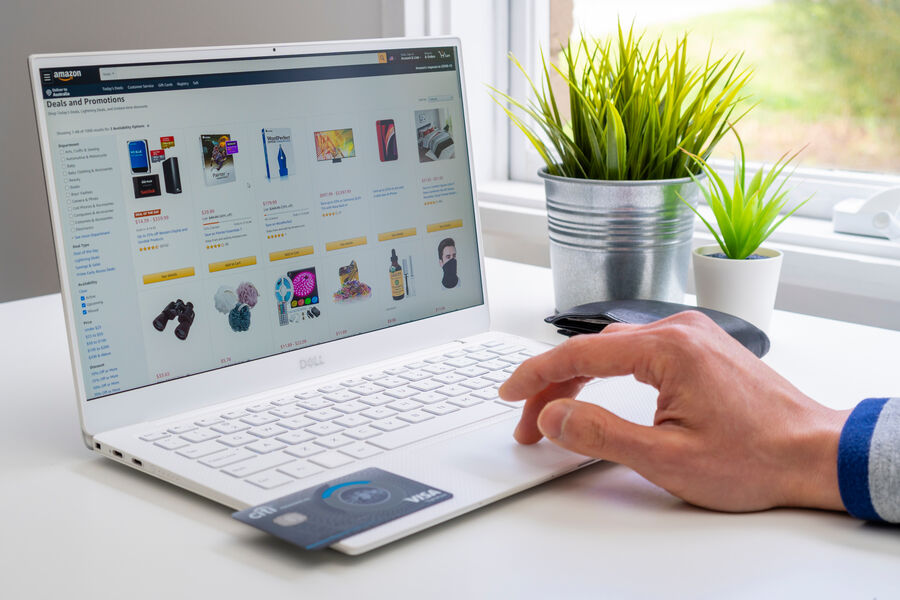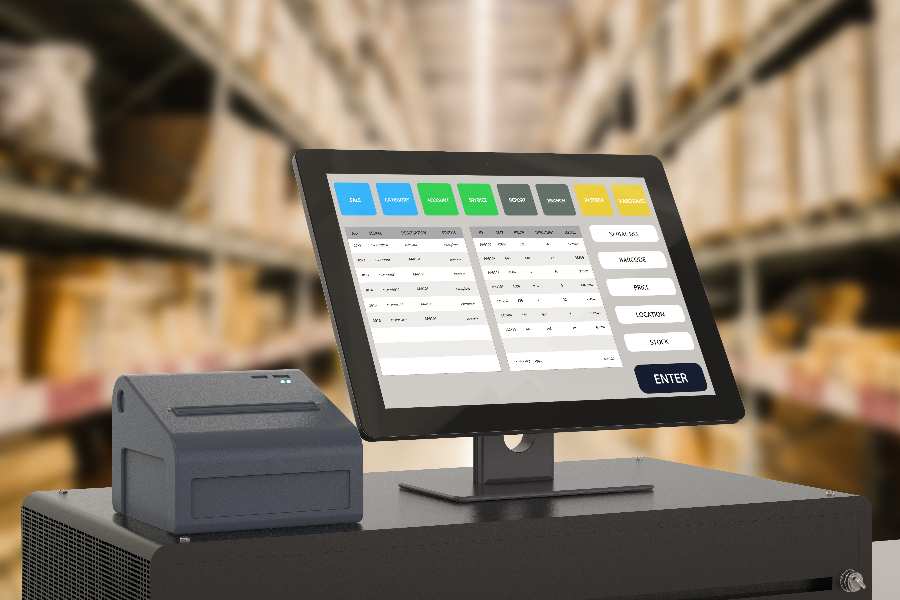
Amazon remains an excellent opportunity for ecommerce sellers. It is the most-visited marketplace in the US with more than 310 million active accounts globally. That’s a lot of chances to reach new customers.
But, selling on Amazon isn’t as simple as taking photos, writing a description, and posting your listing—it requires strategy. You need to understand your audience, develop a pricing strategy, and promote your listings, especially if you aim to build a recognizable brand name and expand outside of Amazon.
This guide will take you through how to start an ecommerce business on Amazon in 2024. Let’s take a look.
What Ecommerce Business Opportunities Does Amazon Offer?
There are essentially three different ways to get involved in Amazon ecommerce:
- Self-publishing books through its Kindle Direct Publishing (KDP) platform
- Selling physical products on its marketplace through dropshipping, private label, or traditional product sourcing
- Creating your own Amazon store—a branded mini storefront within the Amazon platform dedicated to one specific merchant, ideal for creating a brand
While self-publishing is a potentially lucrative business opportunity, most entrepreneurs looking to start and scale an ecommerce business want to sell physical products, so we’ll focus there.
Steps to Starting an Ecommerce Business on Amazon
First, you need to decide what you’re selling. While dropshipping or reselling wholesale products is the easiest way to get started, note that you’ll need a unique selling proposition and unique products to create a competitive brand.
Once you have that sorted, listing your products is the start of building any brand on Amazon. We list the high-level steps below, and you can check our guide to selling on Amazon for a full breakdown.
Step 1: Choose Products for Long-term Success
Choosing your products is important in any ecommerce venture. But, starting a brand on Amazon is especially complex. First, you want to choose products that will perform well on Amazon both in terms of popularity and profit margins.
As we say in our guide on what to sell on Amazon, the best products typically have the following specifications:
- Target sale price of $10 to $50
- Profit margin of 25%–35% or greater
- Lightweight (including packing materials) and cheap to ship
- Durable, low-maintenance, and easily transportable items
- Evergreen popularity (seasonal items can supplement your product selection, but shouldn’t be the main focus)
- Superior quality compared to the competition
Since you are also trying to build a long-term business, place extra emphasis on evergreen popularity and superior product quality. Because anyone can sell on Amazon, the competition is fierce. It’s hard enough to create a listing with good visibility—it’s 10 times harder to get Amazon shoppers to remember your store name. Having high-quality everyday items is a good strategy for becoming a name shoppers recognize.
For example, Simple Modern is an Amazon-native brand that now sells in Walmart, Target, and more, and has a cult following with decent direct-to-consumer sales. Simple Modern’s CEO shares his tips on X (formerly Twitter):
In 2016 I co-founded a drinkware company.
It seemed insane to others
We would be competing with great brands like Yeti and Hydroflask.
We only had $200,000 while our competitors had hundreds of millions.
Today we sell over $100,000,000 annually.
A secret on how we did it:
— Mike Beckham (@mikebeckhamsm) May 26, 2022
If you’re selling physical products, here are some tips to get you started:
Tip: Get a Trademark
Assuming you qualify, filing for a trademark or patent for your brand and products will help minimize competition by preventing knock-offs and enable you to register in Amazon’s Brand Registry, which provides free tools for protecting and growing your brand. You can even file your trademark through Amazon IP Accelerator.
Step 2: Register Your Amazon Seller Account
Once you know what products you’re selling and are ready to get started, the next step is signing up for an Amazon Seller Account if you don’t have one already.
You can do this on Amazon Seller Central.
In addition to your basic information, an Amazon Seller Account will require your bank account and credit card information for deposits and fees, a government ID, and tax information.
We recommend choosing a Professional seller account instead of an Individual seller account so you get access to Amazon’s brand-building features.
Once you’re signed up, you’ll have full access to Seller Central, which is your internal hub for managing your products and account, tracking inventory, managing pricing, filling orders, and more.
Step 3: Figure Out Fulfillment
Speaking of filling orders, order fulfillment is how you get the product to the customer after they’ve made a purchase on your Amazon store. Amazon offers Fulfillment by Amazon (FBA) services, or you can choose to fulfill orders yourself (Fulfillment by Merchant or FBM). You can also choose to outsource order fulfillment to a third party outside of Amazon.
In general, we recommend Amazon’s FBA for fulfillment as it can be relatively hands-off for entrepreneurs, which is often ideal for those just starting out in ecommerce.
However, depending on what other sales channels you have, or plan to have, another third-party fulfillment company might be your best option.
Here are some more resources to help you plan order fulfillment logistics:
- Fulfillment by Amazon (FBA) Review
- Best Fulfillment Companies for Small Businesses
- In-house vs Outsourced Fulfillment: Ultimate Guide for SMBs
Step 4: Create Product Listings
You have your products and your Amazon account, so now you need to turn those products into listings to feature on your storefront. Product listings encompass a couple of key elements:
- Product title: The name of your product
- Product thumbnail: The hero image on a plain white background
- Product description: Additional details and bullet points about your product
- Product photos: Supplement product images to showcase features and benefits
All Amazon listings have the same basic elements. Source: eCom Engine
You’ll also want to incorporate relevant keywords in your title and descriptions to improve visibility and conversion rates in Amazon search results—we cover more on this below.
Step 5: Set Prices
Another crucial element of a successful Amazon product is a competitive price. Pricing your Amazon products involves a careful balance of optimizing for sales and also maintaining healthy profit margins. And in many cases, since you’re being compared to tons of competing merchants and products, shoppers are paying extra attention to the price.
According to Jungle Scout, in 2023, 58% of Amazon sellers priced their products between $16 and $50.
You’ll want to account for a healthy profit margin, competitor pricing, production costs, and shipping fees in your pricing strategy.
Here are some resources to help with your product pricing strategy:
- Retail Markup Calculator: How to Price Your Products
- What Is Penetration Pricing? Complete Guide + Examples
- Product vs Period Costs: Differences & How To Distinguish
- What Is Dynamic Pricing? Types, Examples & Benefits
Step 6: Launch & Promote Your Amazon Store
Once your products are listed, launch your store and start promoting your products. You can tap into Amazon Ads’ tools to reach customers where they’re at through targeted campaigns and tools.
The types of ads available for Amazon sellers include:
- Sponsored products: Ads that appear in Amazon search results for individual products
- Sponsored brands: Similar to sponsored products, but ads for your brand page
- Branded shopping experiences: Showcase your products and brands with live-shopping streams, shoppable lifestyle posts, and immersive storefronts
- Display ads: Branded banners and other ad types across Amazon and third-party sites
Tip: Opt for a combination of ad types that focus on both individual product conversions and brand awareness. According to Amazon, sellers who use both contextual targeting and remarketing have a 28% higher return on ad spend and a 5% higher conversion rate compared to those who only use one tactic.
Step 7: Grow a Strong Brand
Having a strong brand will help you sell more not only on Amazon but also on all your commerce channels—which is important if you aspire to scale your business beyond the platform. Brand awareness and recognition can lead to brand loyalty, which in turn leads to repeat purchases and even word-of-mouth marketing.
To create a strong brand, offer high-quality products, excellent customer service, and consistent experiences across your listings. You might integrate elements like logos, packaging, and product inserts to further drive visual recognition and familiarity.
Check out these resources to learn how to build your brand:
- Small Business Branding Examples (+ Why They Work)
- How to Write a Brand Story That Stands Out (+ Free Template)
- Creative Small Business Packaging Ideas + Examples
Tips & Best Practices for Starting an Online Business on Amazon
Amazon generates $746.22 billion in global retail ecommerce sales in just one year. It’s larger than all of its closest competitors, making up more than 37% of the total US ecommerce retail market. To grab your slice of this pie, keep the following tips and best practices in mind:
Abide by Amazon’s Guidelines
Amazon has specific requirements for merchants and listings. It’s important to make yourself aware of these guidelines and to abide by them. You’ll also want to stay apprised of any changes or updates in Amazon requirements to ensure compliance. Non-compliance can mean your listings will lose visibility or, worse, become deactivated.
Here are some places to check for Amazon guidelines:
- Stores Content Guidelines and Acceptance Policies
- File Requirements for Amazon Photos
- Marketplace Items Condition Guidelines
- Amazon Video Content Guidelines for Influencers
- Amazon Live Shoppable Videos Content Guidelines
- Community Guidelines
- Content Guidelines for Books
- Amazon Trademark Usage Guidelines
Understand the Costs
Amazon seller fees apply when using its platform as a merchant. The main fees that Amazon charges are account fees and referral or sale-related fees.
Here’s how Amazon’s membership fees break down for Individual Sellers and Professional Sellers:
Account Fees
Referral and Sales Fees
Other fees you will encounter are advertising fees and fulfillment fees. Advertising fees will vary based on the type of ads you choose and your budget. Your fulfillment fees will vary depending on the types of products you sell and whether or not you use Amazon’s fulfillment services or another provider.
Price Products Strategically
Pricing your products for Amazon involves a balance between offering the lowest price and making sure you earn enough profit. Don’t forget to account for expenses associated with marketing and selling each product—for example, Amazon charges seller fees, so you’ll want to price high enough to cover those costs.
Do some market research to see what your competitors charge for the same or similar products. Take note of which products sell a lot, which products have lots of positive (or negative) reviews, and any discounts or offers on the pricing. Calculate your prices based on your target markup and see if you can compete. If you can’t compete price-wise, you’ll need to consider your differentiator and branding.
Optimize for Search
Amazon SEO is a whole different beast than regular SEO for Google or your website. People searching on Amazon have different behaviors than people searching on Google. Amazon searches typically involve higher intent to buy and are almost always centered around a specific type of product. If you have strong brand equity, you can also optimize for your branded keywords.
Effective Amazon SEO strategy comes down to promotional campaigns, identifying winning keywords, and optimizing each of your listings’ elements. You’ll want every listing to have a well-structured title, compelling images, reader-friendly bullet points, a detailed product description, and competitive pricing.
Build Customer Loyalty
Building customer loyalty is challenging for just about every retailer, and it’s especially tricky on Amazon. However, not impossible.
- Offer Subscribe and Save: One of the easiest ways to get repeat customers on Amazon is by enabling Subscribe and Save subscriptions.
- Run promotions: Participate in Lightning Deals, Prime Day, and coupons to keep customers engaged.
- Be engaged: Respond to customer reviews, be active in your product listings Q&A, post regularly, and continuously optimize your listings with engaging, detailed content. In other words, add value for customers.
- Get active on social media: Having claimed and active social media accounts gives your brands more legitimacy and offers shoppers another way to engage with you,
Work Toward an Owned Audience
An owned audience is when you, the business, have complete access and control over your customer base. You have their contact, sales, engagement, and other data.
By comparison, Amazon, social media, and other marketplaces are borrowed or rented audiences. In other words, if those platforms went away, so would your customers.
While rented and borrowed audiences are crucial for building brand awareness, to establish long-term success as a brand, you want to work towards having some portion of an owned audience as well. In the world of ecommerce, this looks like an online store, email list, and maybe even a blog.
Even if you’re selling on Amazon, create your own website with product listings and collect email addresses for receipts, order tracking, and newsletter and marketing campaigns.
Here are some resources for getting started:
- How to Start an Online Store
- Ultimate Guide to Email Marketing for Retailers
- How to Grow an Ecommerce Business & Optimize for Sales
Pros & Cons of Starting Your Ecommerce Business on Amazon
Amazon provides a lot of opportunities for sellers of all sizes, given its popularity with consumers. That said, it has regulations and unique consumer behaviors that make scaling a brand difficult.
Unique Opportunities Starting on Amazon Provides
- Huge customer base: By selling on Amazon you automatically have access to its 310 million active shoppers. By comparison, if you are starting out just on your own, you’ll need to invest a ton of marketing dollars to reach your audience.
- Brand trust and credibility: Shoppers know and trust the Amazon name. Especially if you have an Amazon Prime designation, shoppers inherently trust that your product and brand meet Amazon’s quality controls and standards.
- Amazon FBA: Amazon has an absolutely massive fulfillment network with guaranteed delivery times. As an Amazon seller, you have access to that network.
- Seller Central reports: Amazon offers an array of data in the Business reports found through Seller Central such as conversion data, keyword data, and more.
Challenges of Starting a Business on Amazon
- Saturated market and high competition: Since anyone can sell on Amazon, almost everyone is selling on Amazon. Amazon has over 2 million independent SMB sellers that you’ll be competing with. Not to mention, Amazon itself is constantly rolling out more products and private label brands under its own name.
- Limited branding opportunities: As we discussed above, it is difficult to get shoppers to go beyond the Amazon name and recognize individual sellers and brands.
- Restrictions, regulations, and requirements: Amazon restricts the types of products you can sell and has strict guidelines for sellers.
Frequently Asked Questions (FAQs)
Click on the sections below for the most common questions about how to start an online business on Amazon.
You can start selling physical products or digital products on Amazon. Products and categories that tend to sell well on Amazon include books, apparel, home and garden, and baby products.
You can qualify for Amazon’s small business badge with the following stipulations:
- Employ fewer than 100 people
- Generate less than $50 million in annual revenue on and off Amazon
- Registered with Brand Registry or participate in the Handmade program
- Headquarters are in the US
No, selling on Amazon is not free. The Individual selling plan has a fee of 99 cents per sale, and the Professional selling plan has a monthly $39.99 subscription fee, regardless of how many items you sell.
Bottom Line
Starting a retail business using Amazon as a core channel is an excellent way to get into ecommerce in 2024. Amazon lets merchants reach a global audience, compete with big-name brands, and offer convenience to both new and existing customers. Start your ecommerce business on Amazon today using this guide.





